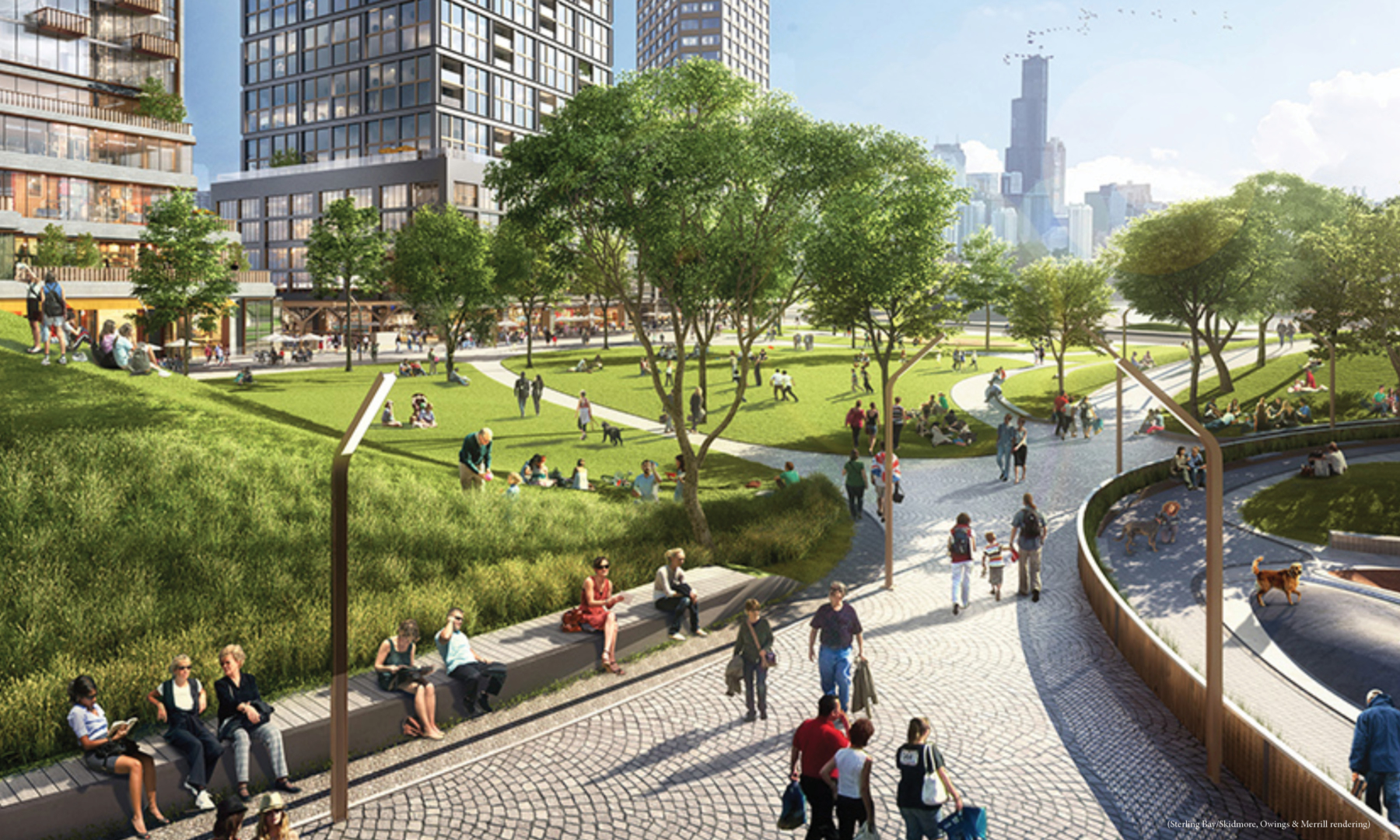It’s no secret that megadevelopments have had a contentious year. And it seems Chicago Mayor Lori Lightfoot is looking to start 2020 off in a more collaborative fashion.
The mayor announced yesterday that she’ll be convening two new community advisory councils: one for Lincoln Yards, Sterling Bay’s $6 billion development along the North Branch Industrial Corridor, and the other for Related Midwest’s $7 billion plan on the Near South Side, known as The 78.
“When I first entered office, I made a commitment to ensure that all major planning efforts … will be met with robust and inclusive community engagement processes,” Lightfoot said in a press release. She said the councils will provide “a transparent process for residents and other stakeholders to provide guidance, identify improvements and maximize economic opportunities for the community and the city at large as design and construction gets underway.”
In terms of real estate, the city expects Lincoln Yards to yield approximately 14 million square feet of new commercial and residential construction and 1,200 units of affordable housing. As for The 78, details are a bit sparser, but the mayor’s statement projected 13 million square feet of new commercial, residential and institutional construction with a 20 percent affordable housing commitment.
If the recent Lincoln Park Builders’ Real Estate Forum is any guide, the relationship between the city and developers has been less than sunny as of late. But the mayor’s announcement specifically quoted both the local aldermen (Ald. Brian Hopkins of the 2nd Ward in the case of Lincoln Yards and Ald. Byron Sigcho-Lopez of the 25th for The 78) and the developers who are expected to participate in the advisory councils.
Sterling Bay CEO Andy Gloor said he was “excited to get this collaboration moving forward as we begin our work,” and Related Midwest President Curt Bailey said he’s looking “forward to a deeper engagement with stakeholders that identifies the best uses of our approved planned development.”
As for the city council contingent, Ald. Hopkins said he has high expectations that “Lincoln Yards will deliver tens of thousands of new jobs, vital new infrastructure and public amenities.” Ald. Sigcho-Lopez’s remarks were slightly less glowing, noting only that “for months we’ve used the community advisory council structure in the 25th Ward to oversee development proposals, and it’s become critical to responsible development” and that he’s pleased to see the process expanding in this way.
The aldermen will work with Lightfoot to appoint 14 members to Lincoln Yards’ council and 17 to The 78’s. The difference may be due to the varying timelines; the city expects Lincoln Yards’ development to take around 10 years while the process for The 78 will be closer to 20. The mayor’s office characterized the makeup of the councils as “neighborhood representatives, community leaders, design professionals, and subject-matter experts.” The city already has websites in place for both the Lincoln Yards and The 78 councils, and is currently accepting applications for volunteers.
The groups will meet at least quarterly starting in early 2020, making recommendations on issues such as public infrastructure design, traffic control and open space to Sterling Bay, Related Midwest and the city.
This type of process could become de rigueur for all new megadevelopments, if a recent proposal from the mayor’s office is accepted by the Chicago Plan Commission. Lightfoot proposed new public engagement guidelines for large development projects earlier this year, and they’re currently under consideration to be applied to large “master planned development” projects on sites such as Michael Reese Hospital in Bronzeville, General Iron Industries in Lincoln Park and U.S. Steel South Works on the city’s far South Side.
